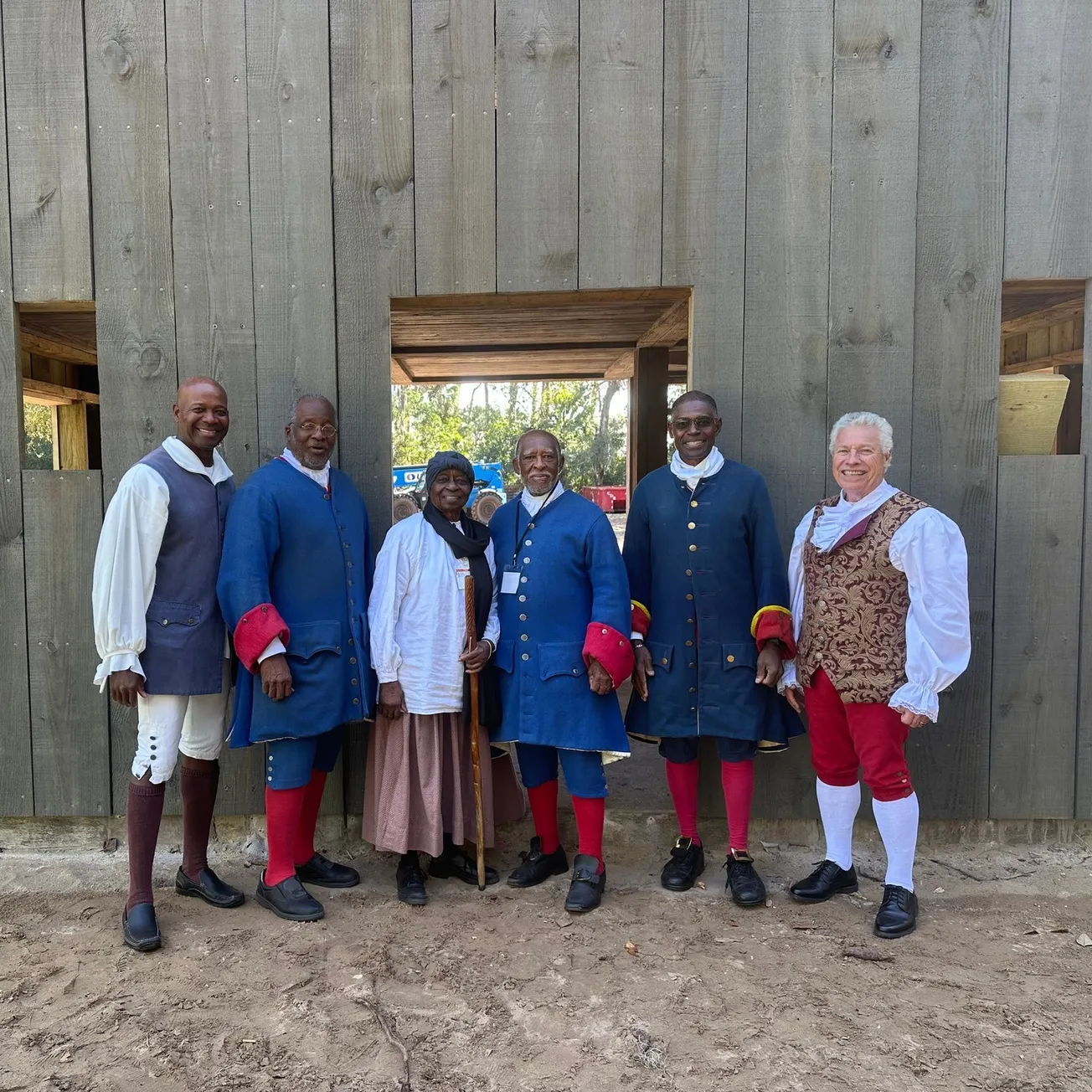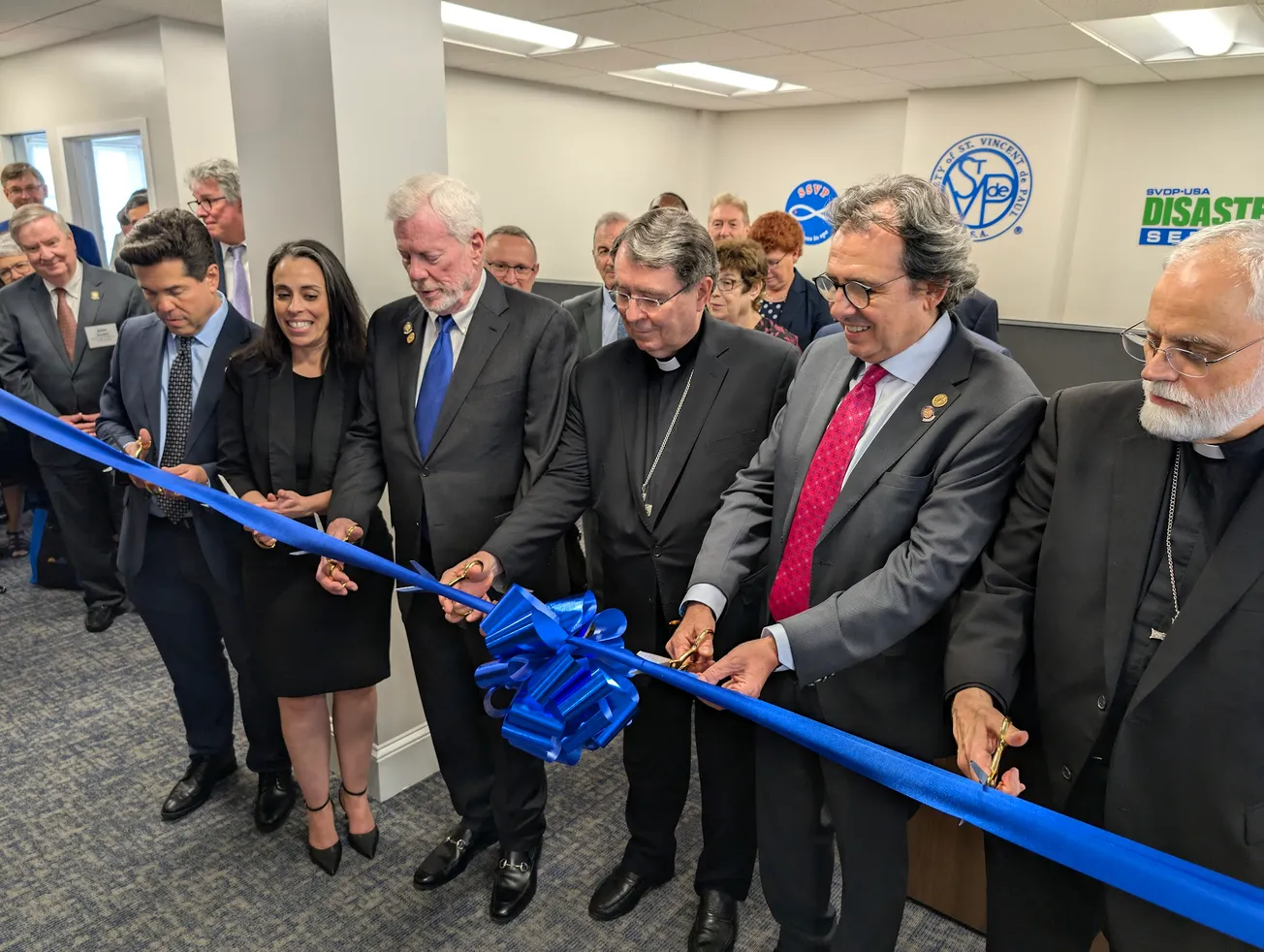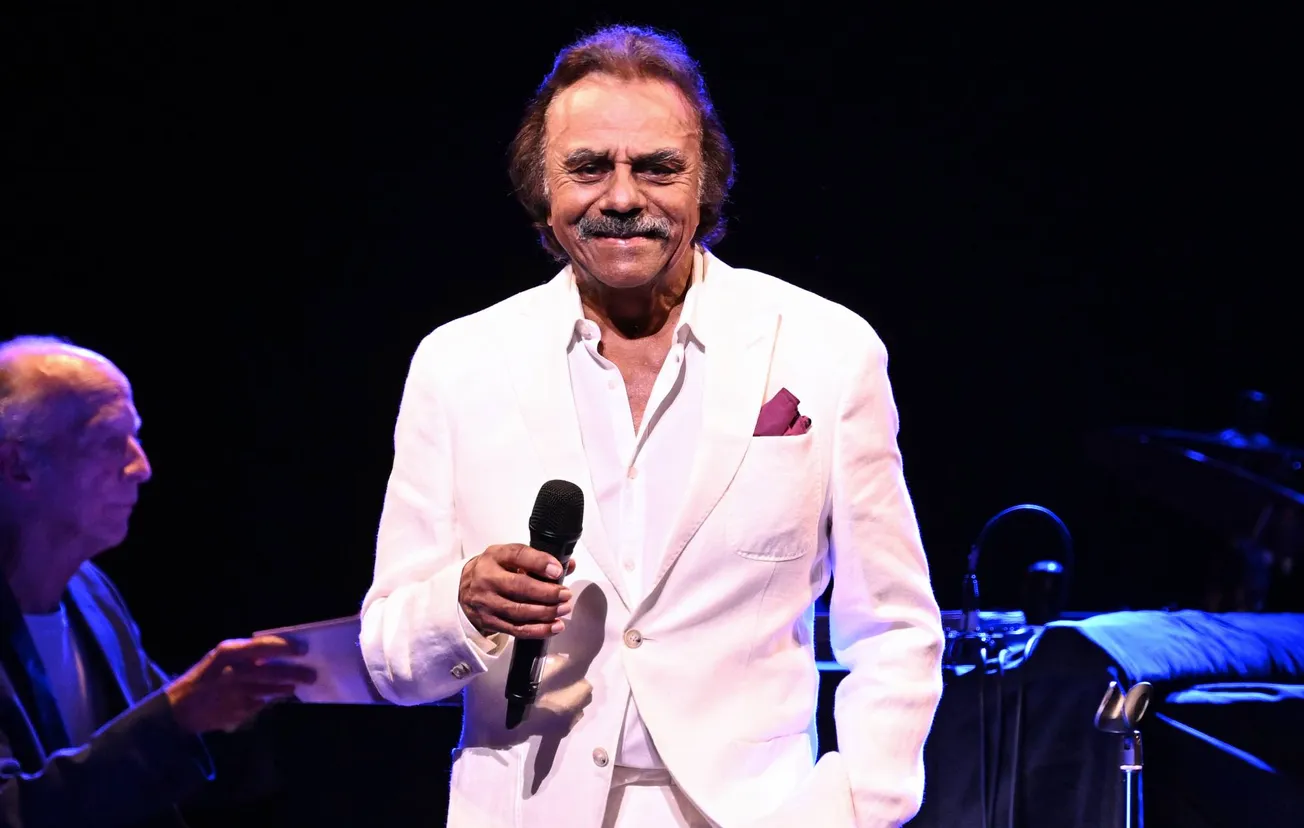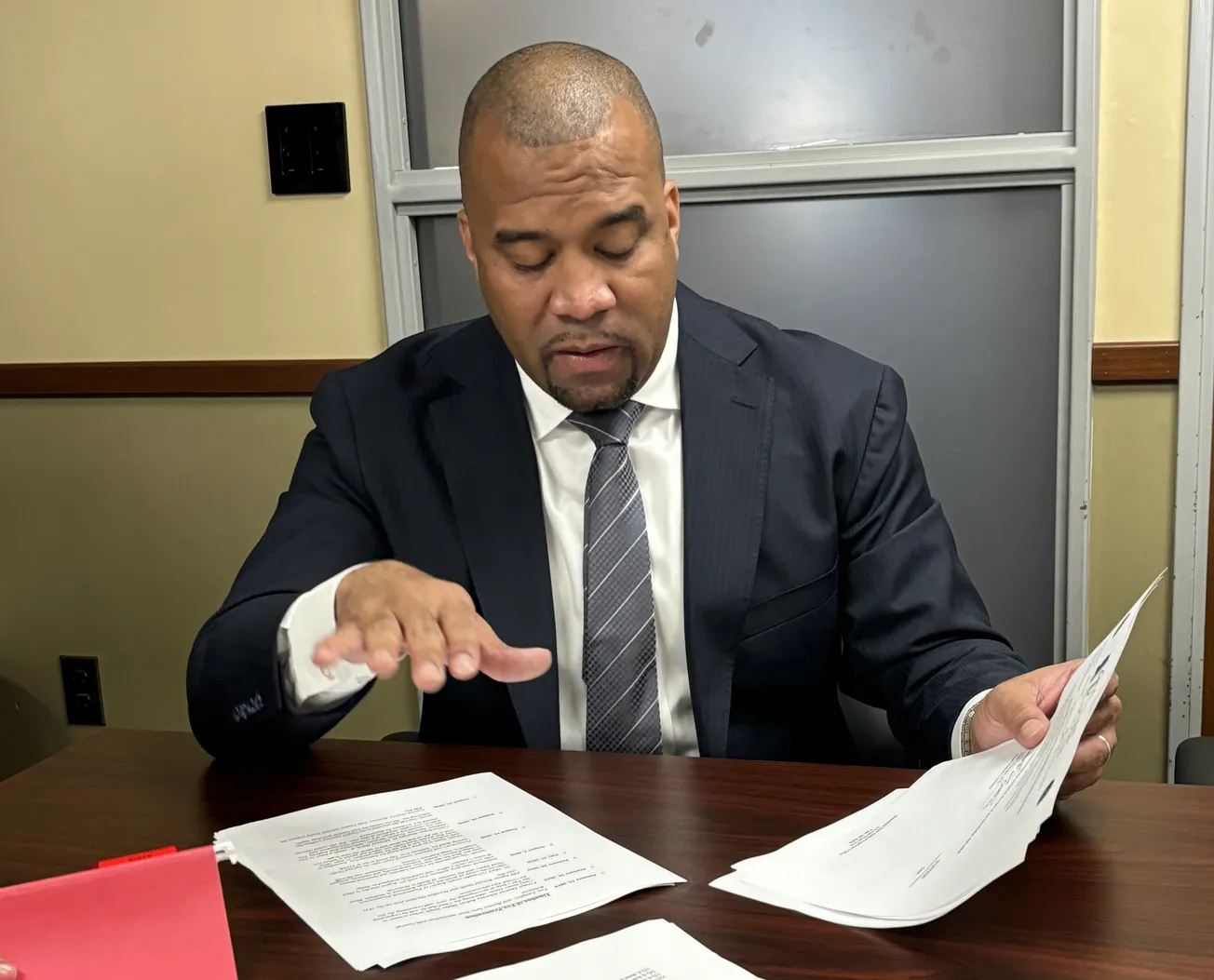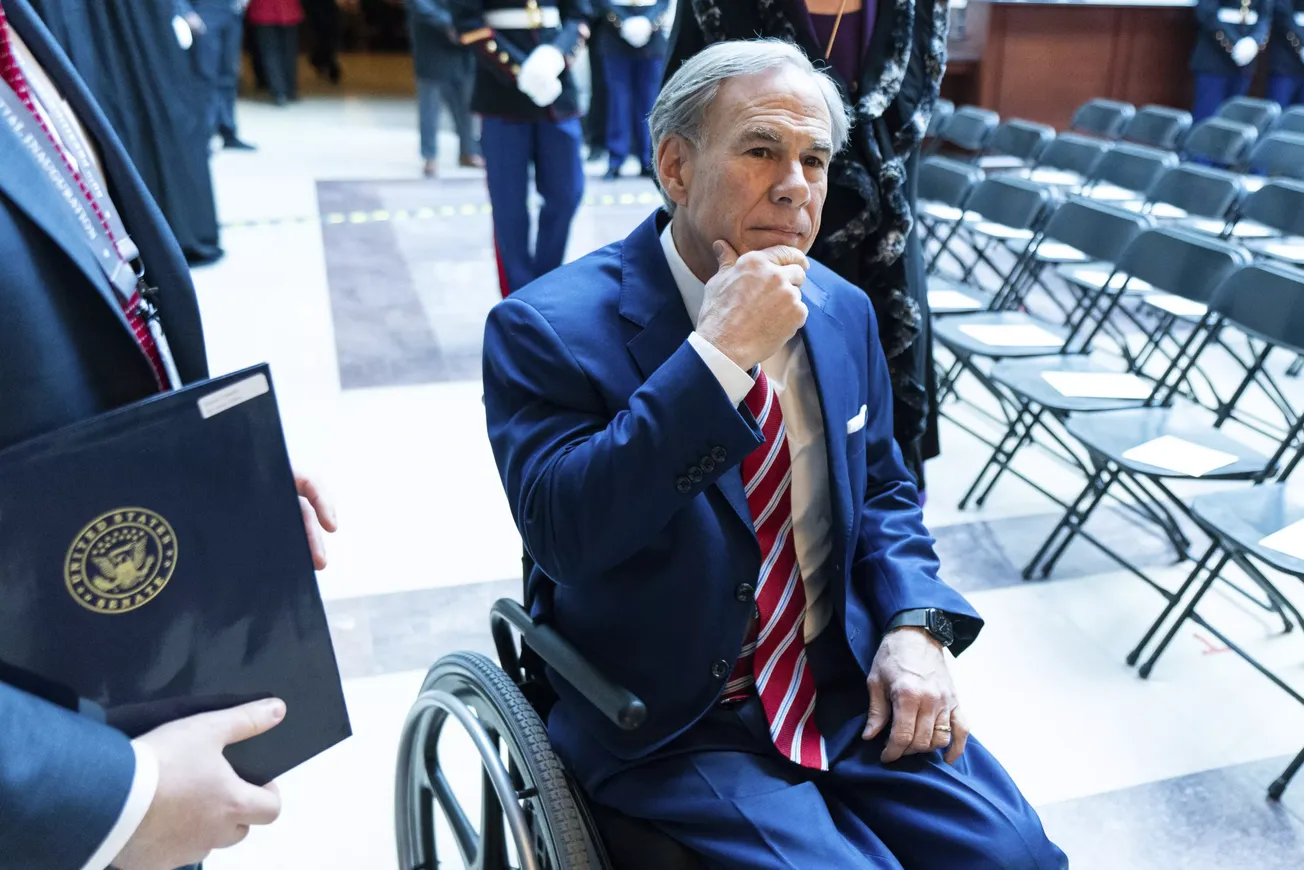SAN FRANCISCO — The Synod on Synodality is no longer at the center of the Catholic media landscape, but don’t be fooled: Pope Francis’ historic gathering of clergy and laypeople as joint voting members in one of the Church’s most important consultative bodies is ongoing and will reconvene this fall in Rome. This follows a landmark inaugural session held in October 2023 with various participants from the United States.
The Nigerian Jesuit priest Agbonkhianmeghe Orobator, dean of the Jesuit School of Theology of Santa Clara University and one of several Black synod delegates, spoke on Feb. 28 at St. Agnes Catholic Church in San Francisco on his experience. The livestreamed event featured the former African Jesuit conference president giving his take on what the Synod means for the Church and why many—including some senior clerics—have been remarkably outspoken against it.
“The idea of synodality is a contested idea,” Orobator told a hybrid listening crowd, quizzing the in-person audience with a number of disparaging quotes from the likes of Cardinals Gerhard Müller (himself a synod delegate last fall), Raymond Burke, and the late George Pell.
“It is not universally acclaimed or accepted within our Church community. There is resistance, there is fear, there is contention, and there is opposition to the very idea of synodality and becoming a synodal Church.”
Orobator noted that such critics of the synod, which can be described as a microcosm of Pope Francis’ forward-thinking vision, are “not bad people” but may reflect a need for continued dialogue within the global community.
“If they hold the position they hold, it’s because they care deeply about the community the same way I care about this community. We all care about this community, and that's why synodality becomes the path for us to journey together.”
Himself a native of West Africa, Orobator said that at the synod gathering in October, the confluence of cultures and perspectives produced no shortage of tension. He also said that such friction is unavoidable and, in many ways, the very essence of a listening Church.
He recalled that the pre-gathering retreat—which some delegates seem to have deliberately skipped—helped center most participants on a common plane of prayer and prudence. He also pointed out that the unique re-arrangement of Paul VI Audience Hall in Rome, built following the Second Vatican Council for the very purpose of synods, also combated elitism—a marked shift from Synods of (only) Bishops in previous eras.
“It’s an amphitheater. It’s got rows and rows of stalls that stack up to the height of the hall and where you sit shows your importance, your rank, and your status.” Orobator said.
“Pope Francis reconfigured [the hall]… He repurposed it and created 36 round tables for the synod delegates to have conversations. That’s what I call disruptive architecture, which meant everybody was on the same level.”
Orobator spoke of a “disturbing intimacy” created by the layout and the general mode of the gathering, where debate was less of a priority than a mutual ear. In that format, he said, entrenched viewpoints were challenged by participants’ personal experiences.

Though one might assume from this that the synod was also meant to produce new dictates for the Church at large, perhaps along more progressive lines, Orobator says the dialogue itself—synodality qua synodality— was the goal, not a means to an end.
“That process itself becomes part of how we as a community journey together. It’s never about, ‘Let’s argue this out. Let’s resolve this. Let’s fight this out now,’” he said.
“No, it’s the process: Are we capable of hearing out one another? Are we capable of making room for one another? That becomes a way of synodality.”
Orobator asserted that Americans in particular seemed to view the October synod session as non-committal, deciding very little after a month of activity. But insofar as the synod was “not about making decisions” and “consultative, not deliberative,” Orobator says the meeting made headway in accomplishing its goal.
“Nothing was decided—as it should be.”
Asked what struck him as the most important issues included in the first synod synthesis report, Orobator highlighted the missionary identity of the Church as a whole across demographic categories, the formation of Church leaders, the matter of sexual identity, the role of women, and intracommunal evangelization of young people “as baptized Christians.”
Baptism formed a major theme overall in Orobator’s address, defining the very nature of synodality in a Church often defined along ideological and patriarchal lines. In a Vatican environment accustomed to qualifications represented by seating arrangements, skull cap colors, and lofty titles, the breakthrough of egalitarian lay empowerment and dialogue for the sake of understanding creates a constructive tension Orobator says is essential for the Church in the modern age.
“It was quite an ‘existential displacement’ for some people to be sitting at the same table with people they are used to giving instructions and teachings to,” he said, picking up on a theme introduced by UK analyst Dr. Austen Ivereigh earlier this year.
“Synodality is a convening of the baptized people of God. That's the access code.”
As for the prospect of whether the Church can withstand the challenge of synodality, Orobator seemed hopeful but also cautious, noting that the various “synodalities” at work in the Church are not always perfectly aligned with one another and can color one’s view of the practice. (The German Synodal Way and the Fifth Plenary Council in Australia were two examples mentioned.)
“Synodality is not one thing… There will be divergences. There will be differences. But how we manage those differences, divergences, and tensions matters,” he said.
“I am convinced that we will do that and do it well if we are faithful to those important components of synodality: a community at prayer, a community that listens, a community that dialogues, a community that discerns.”
Nate Tinner-Williams is co-founder and editor of Black Catholic Messenger.



